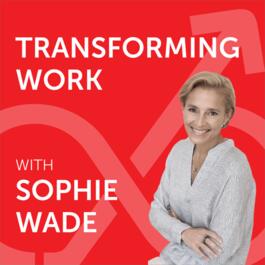
Brian Robertson - Organizational Clarity to Manage Work Not People
Brian Robertson is Founder and CEO of GlassFrog and creator of the decentralized management and organizational governance system, Holacracy. Brian brings a software architect’s lens to fixing organizational ambiguity. He outlines why clarity—not control—is the key to scalable leadership and self-managed teams. Brian explains the benefits of an organizational clarifying framework with dynamic role definitions and boundaries that enhance autonomy and results. He discusses how human-centric systems adaptations enable innovation, AI integration, and support business evolution. KEY TAKEAWAYS [01:34] Brian learns to read on software development books and leaves school early. [02:00] Brian loves the structured thinking and clarity of software development. [02:22] Seeing through a software architect's lens, Brain seeks to fix business’s unclear operations. [03:19] Brian starts a company as a lab to explore authority structure, work organization, management and more. [03:54] Holacracy emerges: clarity-driven not consensus-based but everyone has a voice. [06:03] Traditional job descriptions are outdated; clarity makes things easier as everything gets faster. [07:06] Clarity evolves with tweaks for dynamic roles, adaptive processes, and efficient meetings. [07:41] Optimizing decision-making to avoid the tyranny of consensus and top-down control. [09:46] Biggest challenge in scaling is unlearning old habits and identity ties to status. [11:03] Leaders should manage work, not people, and build systems others can lead within. [12:10] Good leaders create clarity to prevent recurring crises and enable autonomy. [13:08] Boundaries must be clear so people feel safe to act independently. [14:15] Limits evolve over time; clarity comes from learning together. [15:21] Roles are distinct functions with purpose, authority, and expectations. [17:12] People hold multiple roles; work is modular and easier to shift or automate. [19:05] Clear roles support influence, coordination, and decision-making. [20:06] Governance allows anyone to adjust roles and expectations transparently. [22:00] A new hire adds expectations to the founder’s role in two minutes. [23:12] Lack of clarity persists because defining work well is hard and often skipped. [25:02] Everyone—not just leaders—needs to contribute to organizational clarity now. [27:00] Clarity with adaptability helps tech-minded firms respond quickly to change. [28:01] Zappos added market-based dynamics atop Holacracy to treat teams as micro-businesses. [30:19] GlassFrog simplifies adoption by guiding organizations through incremental change. [31:33] AI turns complaints into improvement proposals when structure is clear. [33:30] Without clarity, AI struggles to support internal workflows. [34:17] Holacracy empowers people to move from complaint to constructive action. [35:10] Visionary leaders or incremental adoption paths enable systemic transformation. [37:12] Teams often start with productivity or agile tools, then build structural clarity. [39:00] Clarity must be continuously updated—not a static achievement. [40:04] Empowerment needs limits; without knowing them, people can’t lead. [41:01] Self-leadership means owning your role and acting with confidence. [42:00] IMMEDIATE ACTION TIP: Self-leadership—supporting people stepping up to be CEO of their role—requires clarifying limits to allow people freedom to lead within those limits. RESOURCES Brian Robertson on LinkedIn GlassFrog.com HolacracyOne’s website QUOTES “Expertise is used to manage hard problems, to manage the work, not the people.” “If you need a boss who empowers you, you are in a fundamentally disempowering environment.” On leaders: “I've found that the leader's job is to create organizational clarity…They create the clarity that lets people step into their full power, their full freedom and lead… Their job is to obsolete themselves.” “They're defining boundaries. They're defining expectations. They're empowering by creating a system, a framework that is so clear that people don't need them to empower them. They can just simply step up into the power they have, because it's all obvious.” “Companies are complex adaptive systems in a massively complex environment in that kind of system.” “It's hard to use AI internally to companies if you don't have organizational clarity. If the way things work around here is in everyone's head, it's not clear and it's not consistent. It's hard for an AI to work with.” “It's training people to step out of just the victim mindset and into a co-creator mindset, into a ‘I can actually drive change here’.” “We need the kind of environment and the kind of culture that supports people really stepping up and being a CEO of their role.” “How do we consistently generate clarity because clarity is subject to entropy? Whatever clarity we have as our business evolves will rapidly become out of date.” “Clarity itself is only as good as people can actually harness and use it by leading within it, by having that power.”
From "Transforming Work with Sophie Wade"


Comments
Add comment Feedback